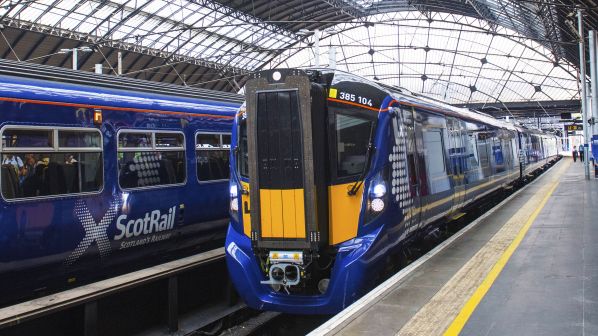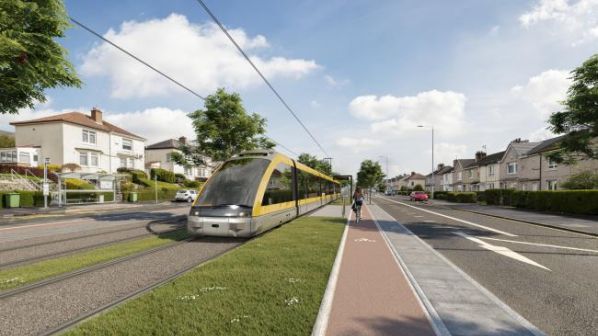The Connecting Glasgow report presents the conclusions of a study by the independent Glasgow Connectivity Commission, which was established in November 2017 under the stewardship of Professor David Begg.
The report states that Glasgow has a “(very) good network overall” by British standards, but the city “falls substantially short” of what has been achieved in similar-sized cities in other countries.
With the exception of the 10.5km Glasgow Subway, which is currently being modernised, the entire fixed public transport network is made up of heavy rail lines and the report says the absence of a modern mass transit system serving inner-urban destinations is a “glaring omission.”
While the heavy rail network is dense it was significantly reduced in size by route and station closures during the second half of the 20th century. However, while some alignments were lost to redevelopment, many remain intact, including tunnels once part of the Central Low Level network.
“The asset value of this dormant infrastructure could be measured in the billions of pounds, and therefore Glasgow has a ready-made basis for enhanced rapid transit that most cities can only dream about,” the report says.
While it provides a good degree of regional connectivity, which has helped Glasgow to attract high-value employment, the report argues the current network is inadequate for meeting urban mobility needs.
Large parts of the most deprived areas of city are poorly served by the rail network, with huge inequality in journey times. Many of the areas with the most urgent need for better transport connectivity lie on closed railway routes. The report says connecting these areas to the railway network is vital for social inclusion and economic growth.
The commission therefore says the first priority of a wider strategy to transform the fixed public network should be the creation of the Glasgow Metro, a network of high-capacity transit lines serving as much of the city as possible.
This network would encompass parts of the heavy rail network such as the Cathcart Circle and the Central Low Level Line, which are more suited to high-density services and trains with better acceleration profiles, enabling the creation of new stations between existing ones.
The network would reactivate abandoned infrastructure such as former Central Low Level Line via the Botanics to Maryhill, and the London Road tunnel to the sports and events cluster at Parkhead and Tollcross, together with new spur lines to areas never before served by rail near these corridors, especially in the north east of the city.

The first line would serve Glasgow Airport.
There would also be completely new sections, such as a line from the city centre to the airport via the South Clyde Growth Corridor and street running sections on wide boulevards such as Edinburgh Road and Great Western Road.
The commission does not take a view on which particular rapid transit technologies will be suitable for each route and suggests a mixture of different technological solutions may be needed for different corridors.
However, the Commission recommends that the first line should run between Paisley Gilmour Street heavy rail station and Glasgow Airport, with a suggested completion date of 2025 in line with the existing timeframe for the Glasgow Airport Access Project. In subsequent phases this could be extended to the city centre via the South Clyde Growth Corridor, which includes Renfrew (the largest town in Scotland without a railway station), Braehead, the Queen Elizabeth University Hospital and Royal Hospital for Children, Subway and bus interchange at Govan, and Pacific Quay.
Connecting Central and Queen Street
In addition to the metro, the report advocates a cross-city heavy rail tunnel connecting the city’s two main stations, Queen Street and Central. The most straightforward option would be for a tunnel running from the Ayrshire and Inverclyde lines in the vicinity of Shields Junction via a single underground station in the city centre located in between Central and Queen Street.

The current terminus station at Queen Street.
From the city centre, the tunnel would then continue north paralleling the tunnel from Queen Street high level station, rejoining the existing network near Cowlairs Junction.
This would potentially provide capacity for around 20 trains across the centre of Glasgow per hour, significantly increasing rail capacity in the city centre. This could also allow Edinburgh and Ayrshire express services to be combined, connecting markets that currently lack direct rail links.

